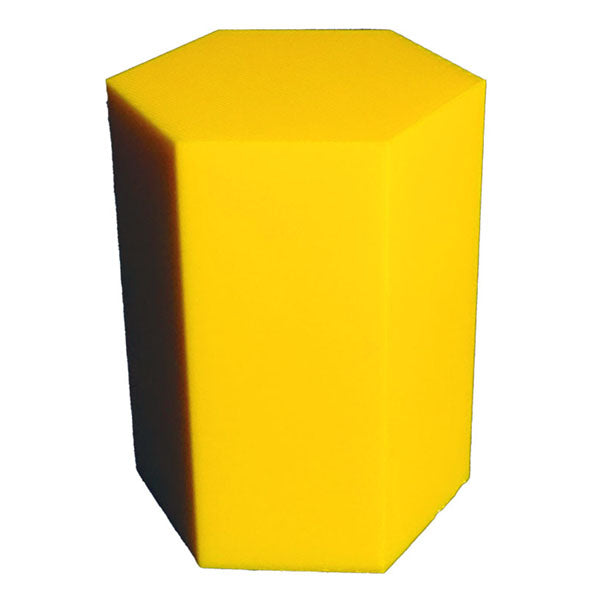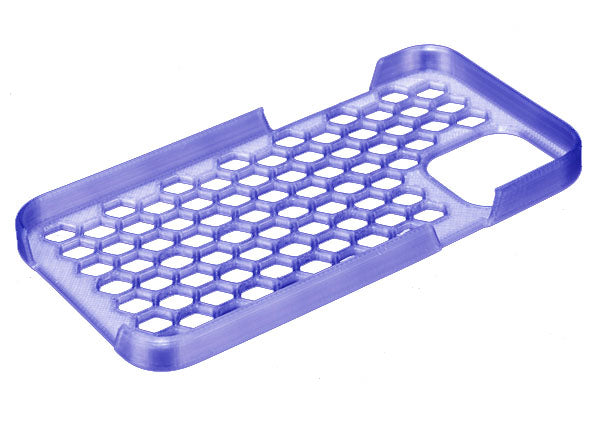3D printing has been around for quite some time and with a wide range of filament types it can sometimes be difficult to decide which filament type is best for your 3d printing projects. In this blog we are going to be focusing on the four most commonly used filament types (PLA, ABS, PETG & TPU) and comparing their characteristics to hopefully help make your decision easier.

PLA Filament
What is PLA Filament?
Polylactic Acid (PLA) filament is the most used 3d printer filament, especially with beginners. It is derived from crops such as corn and sugarcane making it an organic filament which is environmentally friendly and can be biodegradable under specific conditions. Due to its pleasant odour during prints and its ease of use, PLA is very popular with people just starting their 3D printing journey as well as people mass producing models or prototyping. Not only is it ecofriendly but it also has a lower cost, good strength and will last longer sitting on the shelf.
Unlike ABS, PLA filament can be printed at low temperatures without the need of a heated platform or enclosed space. Most manufacturers even recommend opening the doors of enclosed 3D printers as it increases the chance of a better print when exposed to air. PLAs general temperature parameters are between 190-220 degrees for nozzle temperature and between 45-60 degrees for bed temperature.
Some of the downsides to PLA include that it has low heat resistance and that it is not suitable for use outdoors, due to sunlight causing the print to become brittle and break.
Flashforge PLA Pro Filament
Flashforge has developed their own PLA filament called PLA Pro. With an improved formula they have made the filament stronger, increased the efficiency, and made it less prone to tangling, clogging, shrinkage and warping. This makes PLA Pro even easier than the already easy to use PLA.

ABS Filament
What is ABS Filament?
Acrylonitrile Butadiene Styrene (ABS) filament is the second most used 3d printer filament. ABS was one of the first materials used in 3D Printing and is still a popular material being used today. It is well known for its use in making LEGO bricks and in household items such as TVs, remotes, toys and many more. It is used for its low cost, high strength, and high heat resistance.
ABS filament requires a higher printing temperature, build platform temperature, and works best in an enclosed chamber so that it can maintain a constant heat around the model during prints. ABSs general temperature parameters are between 220-240 degrees for nozzle temperature and between 80-110 for bed temperature.
The downside to ABS is that it does warp and shrink leading to model inaccuracies whilst also emitting some unpleasant fumes. You will need a heated platform that can go to at least 100 Degrees, and it is recommended that you use ABS with an enclosed printer that also has a HEPA air filter installed.
Flashforge ABS Pro Filament
Flashforge has developed their own ABS filament called ABS Pro. With an improved formula they have made the filament stronger, less prone to warpage and shrinkage as well as removed most of the odour generally produced with ABS printing. This makes ABS better and easier to use.

TPU Filament
What is TPU Filament?
Thermoplastic Polyurethane (TPU) filament, although one of the most common 3D printer filaments, out of the four, is probably the hardest to print with. TPU is well known for its flexibility and is commonly used in things like phone cases, shoes, wrist bands and even bouncy balls as it also has good impact resistance.
Like PLA, TPU filament does not require the use of a heated platform or an enclosed printer. TPUs general temperature parameters are between 225-245 degrees for nozzle temperature and between 45-60 degrees for bed temperature.
The downsides of TPU filament are that it can be a lot harder to print with due to its poor bridging characteristics, possibility of filament build up and stringing. It is also recommended to use a 3D printer with a direct drive extruder rather than a Bowden tube extruder which is featured on the Flashforge Adventurer series 3D printers. The reason for this is that TPU filament can easily kink or coil inside the extruder and using a direct drive extruder greatly reduces the gap from where the printer pushes the filament from and where it melts helping reduce this issue.

PETG Filament
What is PETG Filament?
Polyethylene Terephthalate Glycol (PETG) is a Glycol modified version of the same material (PET) commonly used to make water bottles, making this a food safe filament. PETG has good impact resistance and great thermal characteristics meaning that it cools very efficiently with almost no warpage. It is an ideal filament for things like candle holders, coasters, bowls, cups and plates as the printed model will generally have a smooth and glossy finish.
Like ABS, PETG filament requires a higher printing temperature, build platform temperature, and works best in an enclosed chamber so that it can maintain a constant heat around the model during prints. PETGs general temperature parameters are between 230-250 degrees for nozzle temperature and between 75-90 degrees for bed temperature.
The only downsides to printing with PETG is that just like TPU filament it has poor bridging characteristics meaning you are more likely to require supports for overhanging parts and that like PLA, it is more prone to stringy printing which can leave small hairs on the surface of your print.
Now that we have covered the characteristics it’s time to answer the big question.
Which Should You Get?
PLA filament is great for things like model making both big and small and for food related projects, as long as they are cool and not hot.
ABS filament being stronger, is great for things like working parts (cogs and other mechanical parts, decorative interior car parts), toys and household items.
TPU filament with its flexible characteristics is perfect for things like bouncy balls, footwear, jewellery and flexible phone cases.
PETG filament being food grade and heat resistive is perfect for things like candle holders, drink coasters, bowls, cups and plates.



